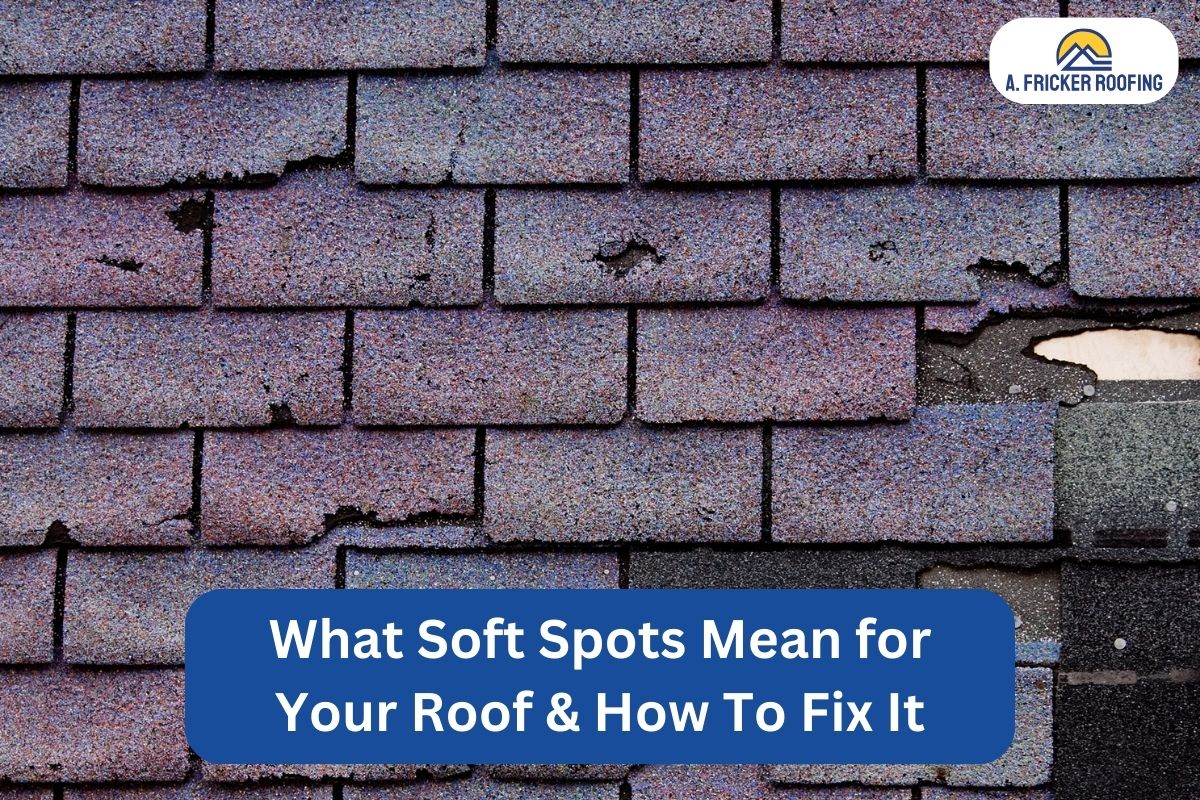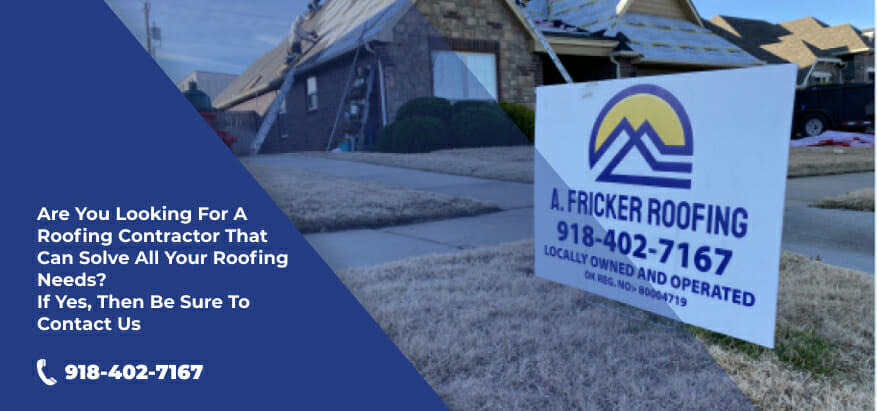Soft spots can pose a significant threat to your roof’s well being if not addressed promptly. This article provides an all-in-one guide to help you identify, understand, and repair these subtle weak points in your roofing system. Now, let’s delve in to safeguard your home from the potential damage caused by roof soft spots.
Understanding Soft Spots on Roofs

A soft spot is an area on your roof where the material has become compromised or weakened, mainly due to prolonged exposure to adverse weather conditions or moisture infiltration over time. The structural integrity at these points becomes reduced, leading to softness. These areas lack robustness and are prone to further damage if left unattended.
When you walk on the roof or when a roofer does inspection work, pay attention to if there’s any sinking feeling underfoot, similar to stepping onto a waterbed, as this usually signifies a soft spot. This type of damage often begins within the underlying layers of the roof but ultimately manifests on the surface.
On your roof, a soft spot may also present as an apparent sag in your roofline. However, roof sagging is a more severe roof issue than soft spots.
Common Causes of Roof Soft Spots
Numerous factors come into play when accounting for roof soft spots. Here are some contributing culprits:
1. Water Damage
The most common culprit behind many roof woes is water damage. Storm damage may result in leaks that allow moisture to accumulate in the roofing system. This then weakens structural integrity, creating those dreaded soft spots.
2. Aging Materials
As with everything else in life, roofs aren’t immune to aging. Over time, roofing materials deteriorate due to constant exposure to elements like sun, rain, and snow. This deterioration equates to lesser resilience against possible issues.
3. Bad Workmanship
Inadequate installation and poor repair jobs can lead to compromised sections on your roof that may lead to substantial soft spots.
4. Trapped Moisture from Poor Ventilation
An improperly vented attic could create an environment conducive to trapped moisture, leading to soggy insulation and eventually resulting in soft spots.
The Impact of Soft Spots on Roofs
Soft spots may seem like a minor issue at a glance, however their implications are far more critical than you might think. Not only do they pose a safety threat due to potential structural damage, but they can also negatively impact your property’s energy efficiency and risk the growth of mold.
1. Structural Risks
When it comes to soft spots in your roof, the primary concern is structural instability. Neglecting this issue will eventually lead to something more troublesome – a saggy, droopy-looking roof that has an increased possibility of cave-in or collapse.
This happens because of water infiltration. Over time, this moisture seeps into underlying layers, causing weakened wooden structures and degradation of insulation materials. Consequently, with few supports left intact among the compromised roofing materials, sections may begin to visibly dip or sag, displaying a clear sign of internal damage.
In worst case scenarios – particularly with continuous neglect – there’s an increased possibility that heavy snowfall or storms could cause roof collapse. Therefore, addressing this issue promptly significantly reduces the risk associated with a damaged roof.
2. Impact on Energy Efficiency
Soft spots can affect your home’s overall heating and cooling efficiency as well.
Water damage can deteriorate insulation, resulting in reduced effectiveness in preventing heat transfer between indoor and outdoor environments. This deterioration means that during winter months, warm air escapes readily, while during hotter periods, the external warmth invades your living spaces.
3. Potential for Mold and Mildew Growth
It’s crucial to pay attention to any moisture on your roof as it could lead to mold growth. Mold and mildew thrive in damp conditions and can cause various health problems, such as respiratory issues, allergic reactions, and headaches, depending on the level of exposure.
Moreover, water damage can go unnoticed until it becomes too severe, and it shows up as stained ceilings, cracked paint, and peeling wallpaper, indicating deeper damage that requires immediate action.
Therefore, it’s essential to address any soft spots in your roof as soon as possible to prevent these threats to your home. Regular check ups and maintenance are crucial to ensure that your home remains safe and cozy, protecting your investment in the long run.
How To Detect Soft Spots on Your Roof
The first step to fixing an issue is identifying it. Therefore, detecting soft spots on your roof is critical for its overall health. There are several approaches for this process including visual inspections, using moisture meters, and consulting with professional roofers. Each method has its benefits and limitations.
1. Visual Inspection
Let’s start with the most straightforward method: a visual inspection. To carry out a thorough check:
- Start indoors by inspecting your ceiling and attic space if accessible.
- Look out for signs of dampness or leaks, such as water stains or peeling paint.
- Climb up to the roof – be sure to prioritize safety when doing so.
- Check for shingles that appear darker or discolorations that suggest trapped moisture.
While performing these steps, remember that even though you can identify some issues visually, not all evidence of soft spots may be seen with the naked eye.
2. Use Moisture Meters
Moisture meters provide another solution for detecting soft spots on roofs. These devices measure the moisture content of your roofing system, which will help determine whether there are any hidden damages.
When using a moisture meter:
- Seek areas with unusual readings as they probably indicate places where water penetration has occurred.
- Do multiple readings around these areas to better understand the extent of the potential damage.
However, it is important to note that while moisture meters can deliver immediate insights about potential roof issues, operating them requires specific technical skills that average homeowners might not have.
3. Consult with a Professional Roofer
When it comes to ensuring accuracy and detailed diagnosis of your roofing situation, nothing beats having a professional roofer conduct an inspection. Experienced roofing contractors possess both expertise and specific tools, making their assessments extremely reliable.
The benefits of choosing a professional roofer include:
- Understanding the extent and potential causes of soft spots.
- Getting advice on viable repair solutions and prevention strategies.
- Ensuring further damages are not inflicted during the inspection process.
Homeowners must recognize that while DIY methods might seem cost effective initially, they may overlook significant issues. For this reason, consulting with a professional should be your first choice when detecting roof soft spots.
How To Address And Repair Soft Spots on Roofs
Now that we’ve covered what soft spots are and how to find them, let’s delve into the essential part: how to fix a soft spot on the roof.
1. DIY vs. Hiring Professionals
While fixing minor roofing problems could be an option for some DIY enthusiasts, handling soft spots should not be taken lightly. The task can result in further issues if one lacks the know-how needed.
If an individual decides to take the matter into their own hands, they need to ensure they have thorough knowledge about spotting a roof’s weak areas and a comprehensive understanding of repair solutions.
However, we always recommend homeowners hire professionals when such intricate tasks come up.
2. Patch or Replace Damaged Roof Sections
When dealing with soft spots on your roof, there are two main paths to follow: patching or replacing damaged sections altogether.
To patch a small damaged area (less than 1-square foot), remove all loose material until you see a solid wood deck. Then, cut out a piece of roofing material the same size as the cleared-out spot and nail it into place before covering it with roofing tar or a compatible sealant.
Replacing entire sections, on the other hand, might seem daunting, but sometimes it becomes inevitable. However, you must remember that early intervention can save you from costly replacements later.
3. Ensure Proper Ventilation for Prevention
Ventilation significantly impacts your roof’s health. An adequate ventilation system aids in maintaining the attic temperature, preventing condensation buildup on the roof deck and rafters, and halting mold growth or other unwanted disasters over time.
Contact A. Fricker Roofing and Waterproofing In Tulsa, OK, For Your Roof Repair
If you find soft spots on your roof in Tulsa, OK, it is time to consult a professional roofer. Contact the expert roofers at A. Fricker Roofing and Waterproofing in Tulsa, OK, to fix soft spots or repair your roof. Give us a call today at (918) 402-7167 and talk to a professional for your roofing needs.

